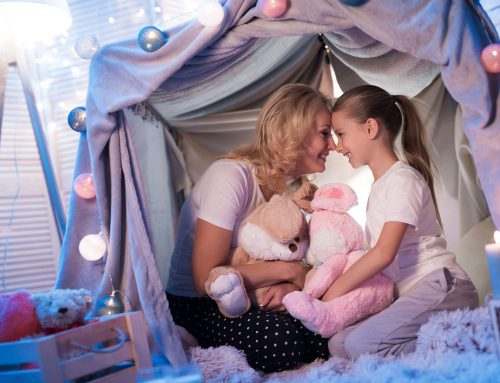Hey There, Superflex!

We’ve all seen the child on the playground who can’t keep it together – one minute they’re laughing and playing, and the next they’re yelling and crying because they hate the game their friends picked. Or maybe they shut down completely when faced with a new or unfamiliar person or event. Kids experience a wide range of emotions — just like adults do — but they often lack the internal mechanisms to process and work through these emotions. In therapy, this is referred to as social-emotional processing and it’s a major component of a child’s well-being.
Occupational therapy focuses heavily on sensory integration, or the ability of the brain to organize sensations in the environment and generate an appropriate response for participation in daily activities. Therapists provide exposure to sensory experiences within a safe, supportive environment so children can develop and integrate their sensory systems. However, this can bring out various emotions, including fear, anxiety, and frustration. It’s important to address these moments so children learn their emotions are acceptable and they can then work on strategies to manage them.
There are several recognized protocols that are frequently used by occupational therapists to address social emotional processing. A therapist will typically look at a child’s age and developmental level to determine which curriculum would best fit their needs. Self-regulation is another important factor in helping kids manage their emotions, so most curriculums address this, as well.
Zones of Regulation
The Zones of Regulation was created by an occupational therapist and its goal is to help kids learn to regulate their actions. There are four different “zones” (blue, yellow, green, and red) with corresponding emotional states, and kids learn to identify their “zone” in different moments. They’re also provided tools and strategies to help them move between zones and problem solve in challenging moments.
Superflex
Superflex is another component of the “Zones” curriculum, which introduces a superhero, Superflex, who battles the “Unthinkables,” characters who represent common behaviors. Children are taught to act like Superflex, who is “super flexible,” in problem solving and addressing challenging moments. This curriculum tends to do well with young school-aged children who are motivated by superheroes but have difficulty recognizing when they’re acting more like the villains!
ALERT Program
This program focuses primarily on self-regulation in younger aged children. Similar to the “Zones” curriculum, it provides various zones (only 3- red, blue, and green) and gives children a framework to monitor their actions. Kids are taught their body has an engine and it can run too fast, too slow, or just right. This program is a great precursor to teaching children about more nuanced emotional states.
Occupational therapists are known primarily for their work with sensory integration, but a major component of that work is addressing a child’s self-regulation and social emotional processing. If your child is having difficulty with managing their emotions, ask your occupational therapist for tips and strategies that can help!

Eyas Landing is a therapy clinic with a mission to provide evidence-based and family-centered therapy services for children, adolescents, and their families. The primary goal is to deliver relationship-based interventions within the most natural environments and to empower families to reach their full potential. To achieve this goal, our highly educated, compassionate staff dedicates time and expertise to create experiences that maximize therapeutic outcomes. The strength, determination, and perseverance of our clients are evident as they succeed in therapy, and ultimately in their daily lives.
Eyas Landing offers a wide range of comprehensive services including Speech Therapy, Occupational Therapy, Physical Therapy, ABA Therapy, Social Work, Family Therapy, and Neuropsych testing. Services are provided throughout the Chicagoland area via Telehealth, In-Home, and in our state of the art clinic.
Want to learn more or you have a specific question? Feel free to connect with us here!



